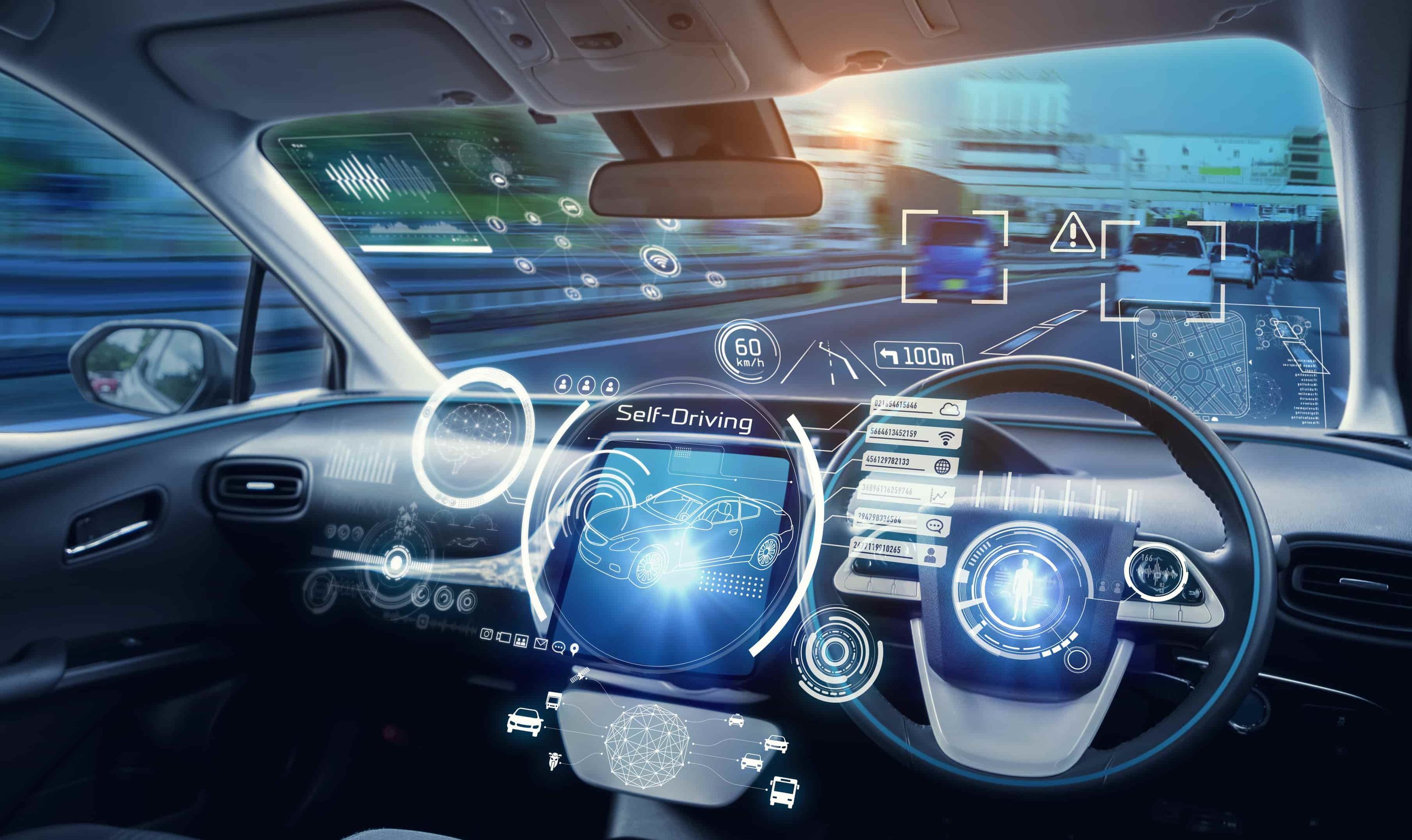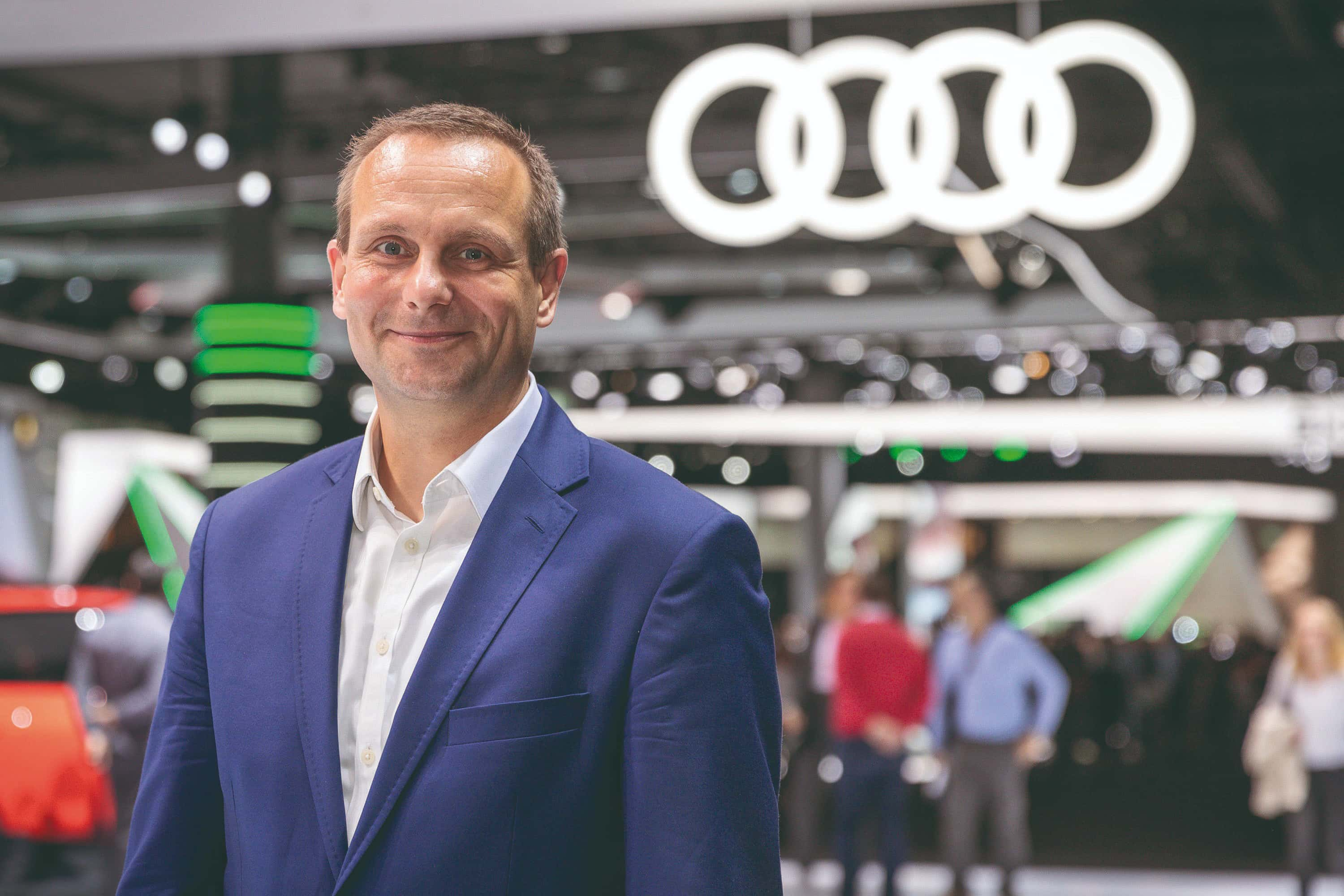Driver assistance systems and their significance for training and CPD
As Head of Government Affairs Berlin at Audi AG, Dr Thomas Schwarz's work includes the analysis of general legal conditions and political developments concerning road traffic.At the same time, he works as a lecturer at HTW Berlin University of Applied Sciences, where he gives automotive technology students insights into the development of driver assistance systems towards autonomous driving. We spoke to him about these technologies, their future and their significance for training and CPD.
Dr Schwarz, what is the current significance of driver assistance systems for road traffic and what is their fundamental added value?
Thomas Schwarz: "Driver assistance systems are already having a very positive impact on road traffic. This especially applies to ESP, for example, which is currently the most effective active safety system and now a legally binding standard for new cars. Safety is therefore one of the fundamental added values. Our vision should be to reduce the number of deaths on the road to zero. Even if this vision cannot be achieved completely, we must maximize our efforts in this direction. Apart from safety, the areas of efficiency and convenience are another two added values of the technologies that are no less important."
Can you elaborate a bit on those two areas?
Thomas Schwarz: "Gladly. When we talk about efficiency, we have to look beyond the assistance systems and see it as part of bigger change processes. Integrated into an interconnected infrastructure, vehicles could navigate through traffic in a more resource-efficient way. In addition, automated vehicles can lower the cost of public transportation. You could fill a book with considerations of this kind. Germany wants to achieve a climate-neutral road transport system by 2050, and the automation brought about by an integrated network of assistants is an important component of this plan. Then there's also convenience, of course. Studies to date have shown that drivers already benefit greatly from assistance systems. In certain situations, when drivers would rather not drive themselves, the greatest possible convenience would of course be a fully autonomous vehicle."
"Even if the changes in road traffic in the coming years seem rather minor to us, the long-term effects of digitalization will probably exceed our current conceptions."
Dr Thomas Schwarz
Head of Government Affairs Berlin at Audi AG
Lecturer in ADAS at HTW Berlin
How far down the road to fully autonomous driving are we?
Thomas Schwarz: "The technology exists. Autonomous vehicles are already in use in industrial production, albeit in the low speed range, in demarcated areas and with trained personnel etc. The on-road pilot projects have also been running for some time.
These trials are currently still showing us the remaining challenges in terms of mastering the last one percent of difficult situations from a technical point of view. Practical testing supports the evolutionary development towards autonomy. However, it must always be accompanied by theoretical, simulation-based, testing.
Aside from technology, though, it is the legal and social hurdles that are currently most pronounced. And the infrastructure also has to be adapted. But progress is being made in this area, as demonstrated by the example of Audi's "online traffic light info" initiative. This makes it possible to increase driver convenience, enhance road safety and encourage an anticipatory and economical style of driving. This involves an algorithm predicting traffic light behaviour during the next two minutes. Since most lights react variably to the volume of traffic and adjust their intervals accordingly, different data sources are used to calculate predictions. Conversely, the city authorities can be provided with aggregated vehicle data to facilitate more efficient traffic light changes and therefore more free-flowing traffic."
Within what time frame could this development happen?
Thomas Schwarz: "The pace is certainly picking up and, according to Moore's Law, will continue to do so. One of the areas of emphasis is software development, which opens up further new functionalities based on existing hardware. If we look at the autonomy levels, the maximum level currently in use on the roads is Level 2 systems, which means that the driver is in charge all the time. We are on the verge of overcoming a big hurdle, namely the leap to Level 3. This will allow the driver to take a break from the driving task in certain situations and let the vehicle take over. And I believe that we will also see Level 4 during this decade, where vehicles can take over the driving task completely in specific cases."
And Level 5 on the roads?
Thomas Schwarz: "No-one can really tell. The average age of the fleet, in other words all vehicles registered in Germany, is increasing. The quicker the fleet is renewed, the quicker the development to autonomous driving. To try and answer your question, it might help to take a look at 'Amara's Law'. Roy Amara postulated that we overestimate the effect of technical innovation in the short term while tending to underestimate it in the long term. In other words, even if the changes in road traffic in the coming years seem rather minor to us, the long-term effects will probably exceed our current conceptions. At the moment, we are witnessing this in the area of hybrid and electric vehicles as well. The initial euphoria was followed by a certain disillusionment. And today almost all decision-makers agree that electric cars will eventually make up the vast majority of private cars."
Would you attribute a prominent role in this process to a certain DAS?
Thomas Schwarz: "Definitely not. Because this effect is not achieved by an individual system or a particular sensor, but by the combination of systems. So if anything has particular prominence, it's the software that makes up the digitally networked system as a whole rather than the individual driver assistance system. You could also pick out ESP as an 'ambassador' of the systems. The real added value in terms of safety that this active safety system has achieved for road traffic is disarmingly convincing."

One of the topics you cover in your lectures at HTW Berlin is 'Driver assistance systems and integral safety'. How do you teach the subject to your students?
Thomas Schwarz: "We talk about the individual electronic systems and how they work. And, of course, we talk about all the stages from sensors to automated driving. So, in short, about everything we just touched on in our discussion. Another important building block is the design of the human-machine interface. Because the interface, too, needs to be adapted in line with developments. Last but not least, my lectures also cover the aforementioned social, legal and infrastructural aspects."
In other words, a broad overview of the whole subject area?
Thomas Schwarz: "Exactly. Unfortunately, one semester isn't enough to examine the development of each system in detail. Hopefully, I am able to convey the potential of driver assistance in road traffic to the students and they then follow this up and develop their own ideas of how to push forward development in this area."
Do you have a central message?
Thomas Schwarz: "If anything, my hope is that lots of messages get across. Where safety is concerned, though, I never tire of stressing that the main cause of accidents is mostly the human factor. The greatest potential of the systems therefore lies in driver assistance. And it is by using the technology as a means of support that we will ultimately achieve the other benefits mentioned at the start: increased efficiency and convenience."
How much importance do you attach to training and CPD in relation to this process?
Thomas Schwarz: "I can only draw on my experience with Audi and VW here. For us, too, it's a challenge to train up our own specialists in our plants and in the garages. There has to be continuous development everywhere. We are therefore placing an increasing emphasis on training electronic skills, for example. In addition, Audi passes information from development on to the garages even before the market launch so that they can subsequently provide competent technical support for our vehicles. We also have many internal training programmes. For example, we use a VR application that permits testing of new driver assistance systems in real vehicles in the field. In short, yes, I consider training to be an absolutely crucial factor in terms of the practical implementation of this process."
Can the students gain practical experience of the systems as well?
Thomas Schwarz: "At HTW, students have access to an Audi S5 equipped with a multitude of assistance systems allowing them to carry out tests and experiments. Unfortunately, I rarely have the time to be with the students when they are working there. But when I do get the opportunity, I have always noticed that there is great interest in the driver assistants. The newest ones are often installed in the premium segment, making them less readily available for many students."
Another consideration is that working with the systems in a real vehicle also requires a lot of space. Lucas-Nülle has therefore developed systems which allow students and trainees to gain practical experience of the driving assistants on a lab table. Do you think that this kind of simple practical application could also be of interest to students?
Thomas Schwarz: "Practical application is definitely important for students. If the hardware allows them to experience how the various sensors react differently in practice, they are then much better able to judge how successful networking of the systems can be achieved. And this networking of systems is, as I said, the crucial foundation of automation. Unfortunately, the limited financial resources of universities can sometimes be a stumbling block here. That is why direct cooperation with industry can be helpful."
Finally, a question perhaps verging on the realm of utopia. If you were asked to outline a vision of road traffic in 10 or 20 years' time, what would it look like?
Thomas Schwarz: "My conception would be of a highly multi- and intermodal transport system in which we rely on different means of transportation much more frequently. And these means of transportation would be interlinked in a network in the most perfect way possible. Automated driving constitutes an important building block in this scenario, among other things because it makes local public transportation more efficient and affordable. I am convinced that different forms of transportation really will gain in importance at different times and for different purposes. And that is a good thing. Because it will make provision better overall and allow us to switch to environmentally friendly transportation more often. In the period of time in question, we will no doubt see some fully automated, driverless journeys. I am thinking of multi-storey car park systems for example. You get out of your car outside the car park and technology does the rest.
At the same time, even in 20 years, I can't see fully autonomous Level 5 road traffic. We will probably have mixed traffic consisting of autonomous routes and vehicles being driven by people for a long time to come.
In complex situations such as inner-city traffic where there are many different road users who don't always follow the rules, technology still reaches its limits. And, by the way, the same can occasionally be said of people. But here, too, AI and machine learning will help in being able to represent human anticipation in a technical way - in other words, technology will surpass us one day."
